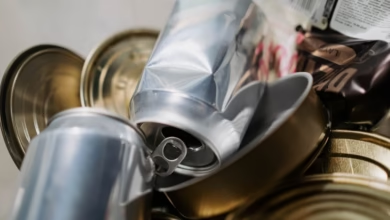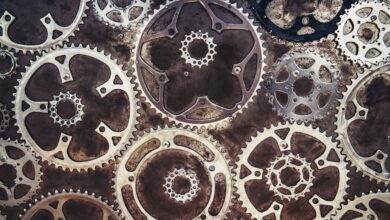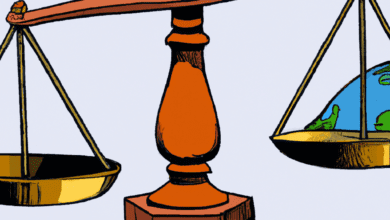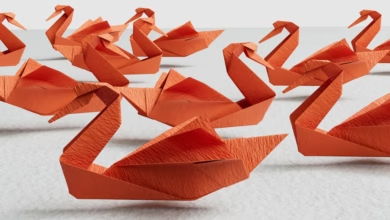Metals Matter: Exploring Industrial Demand, Investment Trends, and Economic Indicators

In today's rapidly evolving economic landscape, metals play a pivotal role that extends beyond traditional applications. From industrial manufacturing to investment portfolios, the demand for various metals reflects not only market trends but also broader economic health and technological advancements. Silver, known for its dual significance in both industrial use and as a precious metal for investment, exemplifies this duality. Meanwhile, copper prices have emerged as key indicators of global economic vitality, with fluctuations often mirroring broader financial conditions.
As the world shifts towards greener energy solutions, the demand for rare earth metals has surged, highlighting their critical role in sustainable technologies. This article delves into the complex interplay between these metals and the investment landscape, exploring essential topics such as the comparative merits of platinum and palladium as investment choices, the influence of inflation on metal prices, and the future of aluminum within a sustainable economy. Additionally, we will examine how mining regulations shape market dynamics and pricing structures. Join us as we navigate the intricate world of metals, revealing their significance in both industrial applications and as investment assets.
- 1. **Metals in Motion: Navigating Industrial Demand and Investment Trends**
- 2. **Economic Indicators: How Copper Prices Signal Global Health**
1. **Metals in Motion: Navigating Industrial Demand and Investment Trends**
The dynamics of the metals market reflect a complex interplay between industrial demand and investment trends, shaping both the economic landscape and individual portfolios. As global economies recover and expand, the demand for various metals—such as copper, aluminum, and rare earth elements—has surged, driven by infrastructure development, technological advancements, and the transition to green energy.
Copper, often considered a bellwether for economic health, serves as a prime example of this relationship. Rising infrastructure projects and electric vehicle production have propelled copper prices, highlighting its critical role in modern technology. Investors closely monitor these price fluctuations, as they can signal broader economic trends.
In parallel, the investment landscape for metals is evolving. Precious metals like gold and silver are traditionally viewed as safe-haven assets during times of economic uncertainty or inflation. Conversely, industrial metals are increasingly seen as growth-oriented investments, particularly as demand surges from sectors like renewable energy. For instance, the rise of electric vehicles has created significant demand for lithium, cobalt, and nickel, further emphasizing the importance of metals in both industrial applications and investment portfolios.
Additionally, the push for sustainability has intensified the focus on rare earth metals, which are essential for green technologies like wind turbines and solar panels. This growing demand not only impacts their market value but also influences investment strategies as investors seek to capitalize on the transition to a sustainable economy.
As the landscape of metal markets continues to evolve, understanding the intricate relationship between industrial demand and investment trends becomes crucial for both investors and industry stakeholders. By staying informed about these dynamics, one can better navigate the complexities of the metals market and make informed decisions that align with economic realities and sustainability goals.
Silver plays a multifaceted role in both industrial and investment markets. As an essential industrial metal, silver is utilized in a variety of applications, including electronics, solar panels, and medical devices, due to its exceptional conductivity and antibacterial properties. The demand for silver in these sectors tends to rise with technological advancements and the expansion of green energy initiatives, particularly in photovoltaics, where it remains a critical component of solar cells. This industrial demand often influences silver prices independently of its investment appeal.
In the investment arena, silver is viewed as a hedge against inflation and economic uncertainty, akin to gold. Investors often turn to silver during periods of market volatility, driving up its demand. Silver is also considered more accessible than gold for retail investors, as it is generally more affordable. However, its price can be highly volatile, influenced by factors such as geopolitical tensions, changes in the U.S. dollar value, and shifts in investment trends.
Copper prices serve as a barometer for global economic health, reflecting the metal’s extensive use in construction and manufacturing. When economies are robust, demand for copper increases, pushing prices higher; conversely, during economic downturns, demand wanes, leading to a decline in prices. This correlation makes copper a critical indicator for investors and economists alike.
The rise of green energy technologies has significantly impacted the demand for rare earth metals, which are crucial for the production of batteries, electric vehicles, and renewable energy solutions. As countries aim for sustainability and reduced carbon footprints, the need for these metals is expected to escalate, potentially leading to supply constraints and price increases.
When comparing platinum and palladium as investment options, both metals have unique characteristics and market behaviors. Platinum is often viewed as a more versatile investment due to its industrial applications in catalytic converters and jewelry. However, palladium has gained popularity due to its higher demand in gasoline-powered vehicles. Investors need to consider market trends, supply dynamics, and their investment goals when choosing between the two.
Incorporating metals into investment portfolios can provide diversification benefits, as these assets often behave differently than stocks and bonds. Precious and industrial metals can act as a safeguard against inflation and currency fluctuations, making them attractive during uncertain economic times. Investors should evaluate their risk tolerance and market conditions to determine the optimal allocation of metals in their portfolios.
Inflation significantly impacts the prices of both precious and industrial metals. As inflation rises, the purchasing power of currency declines, often leading investors to seek refuge in tangible assets like metals. This increased demand can drive prices upward, creating a feedback loop that further reinforces the appeal of metals as an inflation hedge.
Looking to the future, aluminum is poised to play a crucial role in a sustainable economy. With its lightweight properties and recyclability, aluminum is increasingly favored in industries aiming to reduce carbon emissions, such as transportation and packaging. As sustainability becomes a priority, the demand for aluminum is expected to grow, influencing its market dynamics.
Finally, mining regulations can have a profound effect on metal prices. Stricter environmental and safety regulations can limit production capabilities, potentially leading to supply shortages and increased prices. Conversely, deregulation might stimulate production but could raise concerns about environmental impacts. Investors must stay informed about regulatory changes to anticipate their potential effects on metal markets.
2. **Economic Indicators: How Copper Prices Signal Global Health**
Copper prices are often viewed as a barometer for global economic health due to the metal's extensive use in various industries, particularly construction and manufacturing. As an essential component in electrical wiring, plumbing, and infrastructure projects, copper demand tends to rise in times of economic expansion. Conversely, when economic growth slows, demand for copper typically decreases, leading to lower prices.
Several economic indicators can influence copper prices, including manufacturing activity, housing market trends, and overall industrial production. For instance, purchasing managers' indices (PMIs) that reflect manufacturing activity can provide insight into future copper demand. An increasing PMI suggests robust manufacturing growth, which often correlates with higher copper consumption.
Geopolitical factors also play a significant role in copper pricing. Supply disruptions, such as strikes in major copper-producing countries or changes in trade policies, can lead to price volatility. Additionally, macroeconomic trends, such as inflation rates and currency fluctuations, can impact copper prices as they affect production costs and international trade dynamics.
Investors closely monitor copper prices as they often reflect broader economic trends. A rising copper price may signal optimism about economic recovery or growth, while declining prices can indicate possible downturns or stagnation. As such, copper serves not only as a critical industrial metal but also as a valuable economic indicator that provides insights into global market conditions.
In conclusion, the intricate interplay between industrial demand and investment trends in the metals market underscores the significant role that various metals play in our economy. As we have explored, silver not only serves as a valuable asset for investors but also finds extensive applications in industries such as electronics and solar energy. Similarly, copper prices act as a barometer for global economic health, reflecting shifts in demand and supply that are closely tied to industrial activity.
The increasing emphasis on green energy technologies is reshaping the landscape for rare earth metals, driving demand as nations transition toward sustainable energy solutions. Meanwhile, the ongoing debate between platinum and palladium investments highlights the complexities of the precious metals market, where factors such as industrial use, automotive demand, and scarcity influence investor choices.
Moreover, the role of metals in diversifying investment portfolios remains paramount, particularly in times of inflation, when the prices of both precious and industrial metals can serve as a hedge against economic uncertainty. The future of aluminum, with its lightweight and recyclable properties, positions it as a pivotal material in a sustainable economy, while mining regulations continue to shape market dynamics and impact pricing.
Overall, understanding these multifaceted relationships is crucial for investors and industry stakeholders alike. As we move forward, staying informed about the evolving trends in the metals market will be essential for making strategic decisions in both investment and industrial contexts.





